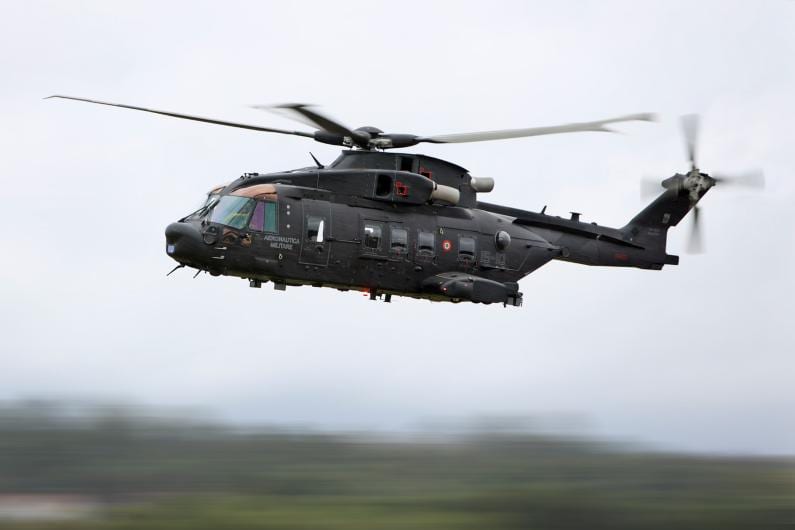
The North Atlantic Treaty Organization (NATO) is looking to medium vertical take-off and landing (VTOL) technology to replace its fleet of aging helicopters in the future, according to Col. Paul Morris assistant head of air maneuvers for the British Army, during an Oct. 6 presentation as part of the Vertical Flight Society’s 76th Annual Forum & Technology Display.
By 2045, the majority of NATO rotorcraft will be out of service creating a need for the new rotorcraft developments to begin now so that they can be deployed when the current rotorcraft retire. NATO’s Next Generation Rotorcraft Capability (NGRC) project is establishing a path toward the adoption of new VTOL technology to replace their older helicopters.
The majority of medium-sized helicopters in NATO service have been flying between 40-60 years. Between the 1960s and 1980s the Puma, UH-60, AW101, and V-22 were put into service. The newest of the NATO medium-sized helicopters, NH90, took its first flight in 1995. There have been few design changes since these rotorcraft were put into service and, because of their age, most of these aircraft will retire in the next two decades, Morris said.
“The analysis suggests that’s about 1,000 airframes, and that’s not including those from the United States, that will be retired in and around that period,” Morris said. “Operational analysis not only says that clearly there is a requirement to replace, but there is an enduring requirement for that capability in the medium space carriage, and high proficiency profiles.”
The helicopters in Morris’s analysis include 100 Mil 8/17s, 191 Pumas, 167 S-70/UH-60s, 143 AW 101s, and 331 NH90s.
Morris said NATO is looking at medium range aircraft because of the cost savings that will be accomplished by an optimized balance of medium and heavy compared to a single heavy-lift fleet. Medium rotorcraft are also task efficient, have a global reach, and can complete complex insertions in urban environments.
“In terms of our sister services in the U.K., Royal Navy, the medium rotorcraft offers significant flexibility as a multi-role platform capable of enduring operations,” Morris said. “Our own CH-47 fleet was not designed to go to sea. Although it can be taken on to the new Queen Elizabeth Class carriers down the lift spread and can go into the hangar spread, it cannot fold, and we look enviously at the U.S. Marine Corps and the CH-53K Super Stallion and its capabilities in that respect. A whole series of future trend analysis and operational experience and trends point to the utility of a medium platform on the future battlefield.”
NATO’s NGRC is in the early stages of development, but they are looking at key technology drivers when developing new rotorcraft like flight control and performance, avionics and mission equipment, materials and manufacturing, cost of ownership reduction, teaming, and lethality.
“We’re looking at advancing sectors, fly by wire technology, active control avionics and mission equipment, and the modular consistent architectures,” Morris said. “The trailblazing work that [Future Vertical Lift] FVL is doing, we watch with keen interest. We see this as the way forward.”
NGRC is also looking at human factors like sensory cueing, augmented reality, and assisting flight crews with artificial intelligence and machine learning.
“This aircraft will certainly not be armed all the time but there is a case for lethality,” Morris said. “We’re particularly interested in directed energy weapons.”
This process was started in 2015 with a workshop on future rotorcraft requirements and in 2016 advanced to the formation of the NGRC Team of Experts (TOE). The NGCR TOE then released a 2018 report on the need to update rotorcraft between 2035-2045. The report stated the need for modular designs and investment in enabling technology.
“I was charged with writing the project and, in 2018, their final report was published,” Morris said. “It looked at the existing rotorcraft needing to be replaced, and the timelines…that the next generation rotorcraft should be designed as a modular airframe, modularity reducing through-life cost enhancing interoperability and sustainability.”
Project NGRC had its inaugural meeting in 2019 where the U.K. agreed to lead the initiative through the pre-concept phase. By the fourth quarter of 2020, a letter of intent is set to be signed by defense ministries of interested nations, and Project NGRC industry day is expected in 2021.